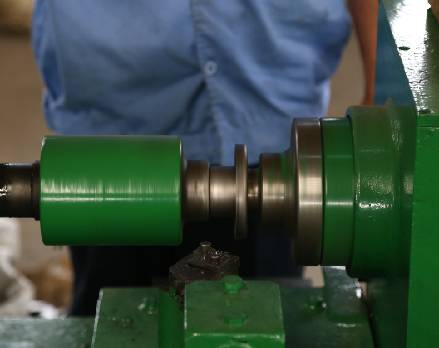 Afrikaans
Afrikaans  Albanian
Albanian  Amharic
Amharic  Arabic
Arabic  Armenian
Armenian  Azerbaijani
Azerbaijani  Basque
Basque  Belarusian
Belarusian  Bengali
Bengali  Bosnian
Bosnian  Bulgarian
Bulgarian  Catalan
Catalan  Cebuano
Cebuano  Corsican
Corsican  Croatian
Croatian  Czech
Czech  Danish
Danish  Dutch
Dutch  English
English  Esperanto
Esperanto  Estonian
Estonian  Finnish
Finnish  French
French  Frisian
Frisian  Galician
Galician  Georgian
Georgian  German
German  Greek
Greek  Gujarati
Gujarati  Haitian Creole
Haitian Creole  hausa
hausa  hawaiian
hawaiian  Hebrew
Hebrew  Hindi
Hindi  Miao
Miao  Hungarian
Hungarian  Icelandic
Icelandic  igbo
igbo  Indonesian
Indonesian  irish
irish  Italian
Italian  Japanese
Japanese  Javanese
Javanese  Kannada
Kannada  kazakh
kazakh  Khmer
Khmer  Rwandese
Rwandese  Korean
Korean  Kurdish
Kurdish  Kyrgyz
Kyrgyz  Lao
Lao  Latin
Latin  Latvian
Latvian  Lithuanian
Lithuanian  Luxembourgish
Luxembourgish  Macedonian
Macedonian  Malgashi
Malgashi  Malay
Malay  Malayalam
Malayalam  Maltese
Maltese  Maori
Maori  Marathi
Marathi  Mongolian
Mongolian  Myanmar
Myanmar  Nepali
Nepali  Norwegian
Norwegian  Norwegian
Norwegian  Occitan
Occitan  Pashto
Pashto  Persian
Persian  Polish
Polish  Portuguese
Portuguese  Punjabi
Punjabi  Romanian
Romanian  Russian
Russian  Samoan
Samoan  Scottish Gaelic
Scottish Gaelic  Serbian
Serbian  Sesotho
Sesotho  Shona
Shona  Sindhi
Sindhi  Sinhala
Sinhala  Slovak
Slovak  Slovenian
Slovenian  Somali
Somali  Spanish
Spanish  Sundanese
Sundanese  Swahili
Swahili  Swedish
Swedish  Tagalog
Tagalog  Tajik
Tajik  Tamil
Tamil  Tatar
Tatar  Telugu
Telugu  Thai
Thai  Turkish
Turkish  Turkmen
Turkmen  Ukrainian
Ukrainian  Urdu
Urdu  Uighur
Uighur  Uzbek
Uzbek  Vietnamese
Vietnamese  Welsh
Welsh  Bantu
Bantu  Yiddish
Yiddish  Yoruba
Yoruba  Zulu
Zulu Types of Lagging for Conveyor Pulley Applications and Performance Enhancement
Understanding Conveyor Pulley Lagging Types
Conveyor systems are integral to many industrial operations, facilitating the movement of materials efficiently and effectively. One critical component of these systems is the conveyor pulley, which plays a vital role in driving the belt and supporting the overall structure. To enhance the performance and longevity of conveyor pulleys, lagging is applied to the pulley surface. Lagging serves multiple functions, including improving friction between the pulley and belt, protecting the pulley from wear, and reducing slippage. There are several types of conveyor pulley lagging, each with unique characteristics and advantages.
1. Rubber Lagging
Rubber lagging is one of the most popular types used in the industry, renowned for its excellent friction properties. It provides a non-slip surface that improves the grip between the pulley and the conveyor belt, which is especially important in applications involving steep inclines or heavy loads. Rubber lagging is durable and can withstand harsh operating conditions, including exposure to moisture, chemicals, and extreme temperatures. This type of lagging is available in various thicknesses and patterns, allowing for customization based on specific operational needs.
2. Ceramic Lagging
Ceramic lagging is an advanced option that incorporates ceramic tiles embedded within a rubber matrix. This combination creates a surface that significantly enhances wear resistance and provides exceptional traction. Ceramic lagging is particularly beneficial in high-abrasion applications, such as those found in mining and aggregate industries. The hard ceramic material helps to reduce slippage and prolongs the life of the conveyor belt, making it a cost-effective choice in the long run.
conveyor pulley lagging types

Polyurethane lagging is another effective type that offers a combination of flexibility and durability. It features a high resistance to wear and tear while also providing excellent grip. One of the key advantages of polyurethane lagging is its ability to resist impacts and abrasions, making it an ideal choice for high-load and high-impact applications. Additionally, polyurethane has a lower coefficient of friction compared to rubber, which can sometimes result in reduced slippage and extended belt life.
4. Metal Lagging
Metal lagging options, including steel and aluminum, are commonly used in environments where extreme conditions or heavy loads are present. Metal lagging provides a robust and durable surface that can withstand significant wear and impact, making it suitable for heavy industrial applications. However, it may not offer the same level of grip as rubber or ceramic lagging, so it is often used in conjunction with other materials to enhance traction.
5. Composite Lagging
Composite lagging combines multiple materials to exploit the benefits of each. For example, a rubber base may be used with ceramic tiles to improve wear resistance and friction simultaneously. This hybrid approach can lead to enhanced performance characteristics, such as improved lifespan and reduced maintenance needs. Composite lagging is tailored to meet the specific challenges of various applications, making it a versatile choice.
Conclusion
Selecting the appropriate lagging for conveyor pulleys is critical to ensuring optimal performance, safety, and longevity of the entire conveyor system. Each type of lagging—be it rubber, ceramic, polyurethane, metal, or composite—offers distinct advantages suited to specific operational requirements. Factors such as load types, environmental conditions, and maintenance budgets should be carefully considered when making a choice. By understanding the different types of conveyor pulley lagging, companies can make informed decisions that enhance their conveyor system’s efficiency and effectiveness, ultimately leading to improved productivity and reduced operational costs. Proper installation and maintenance of the chosen lagging material will maximize benefits and minimize downtime in the long run.
-
Revolutionizing Conveyor Reliability with Advanced Rubber Lagging PulleysNewsJul.22,2025
-
Powering Precision and Durability with Expert Manufacturers of Conveyor ComponentsNewsJul.22,2025
-
Optimizing Conveyor Systems with Advanced Conveyor AccessoriesNewsJul.22,2025
-
Maximize Conveyor Efficiency with Quality Conveyor Idler PulleysNewsJul.22,2025
-
Future-Proof Your Conveyor System with High-Performance Polyurethane RollerNewsJul.22,2025
-
Driving Efficiency Forward with Quality Idlers and RollersNewsJul.22,2025





























